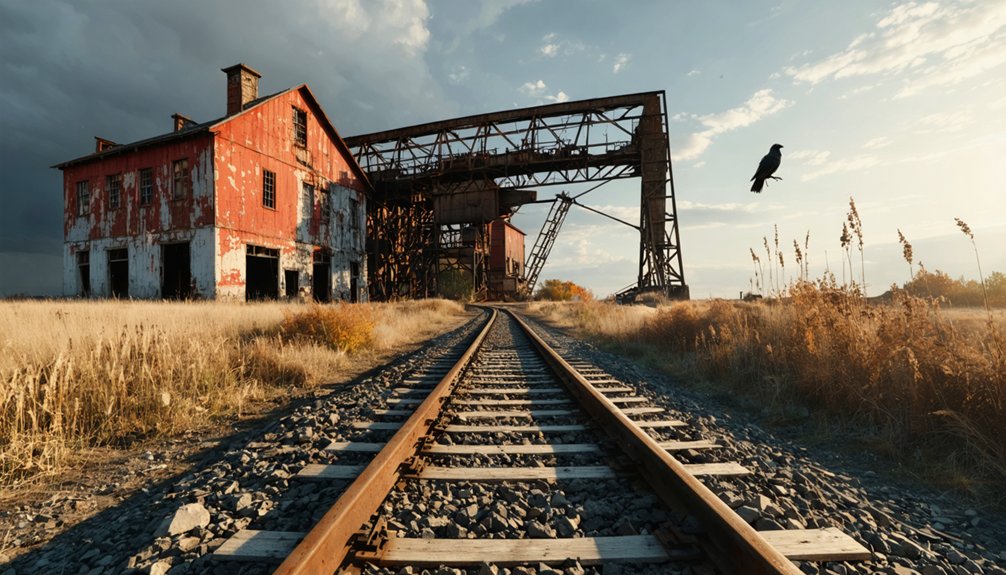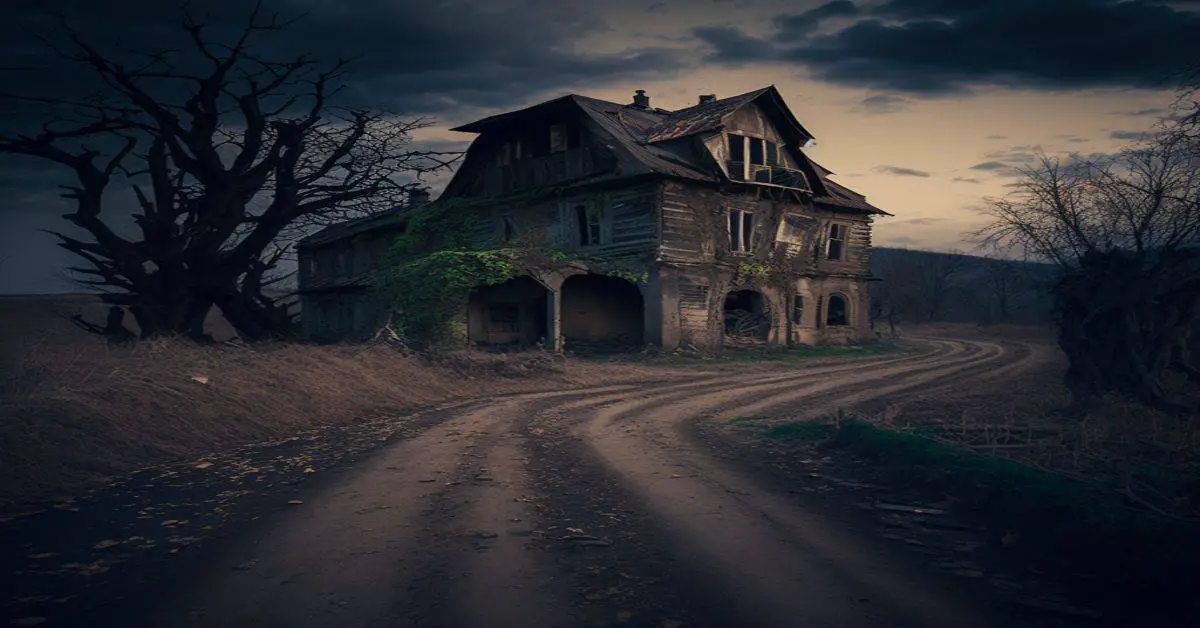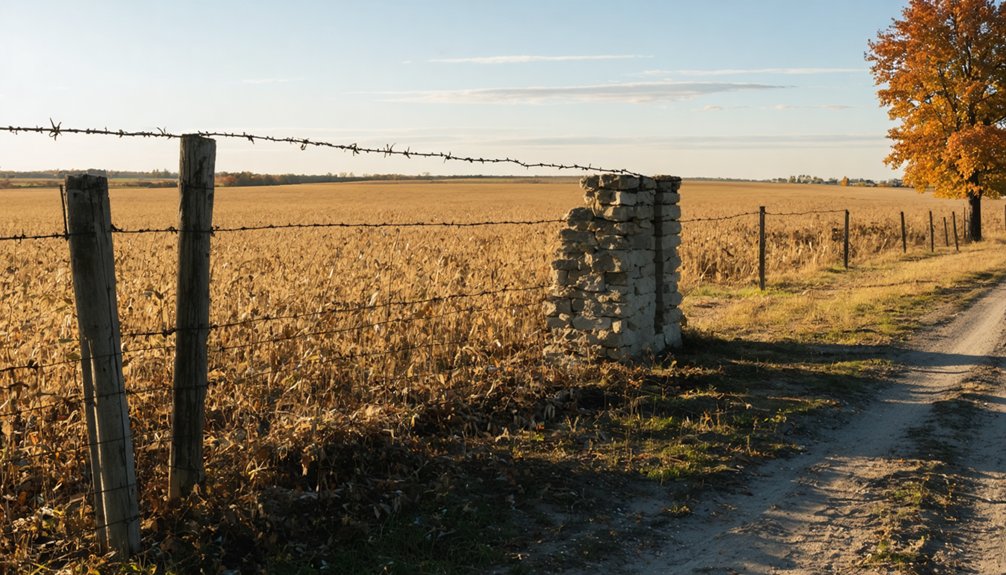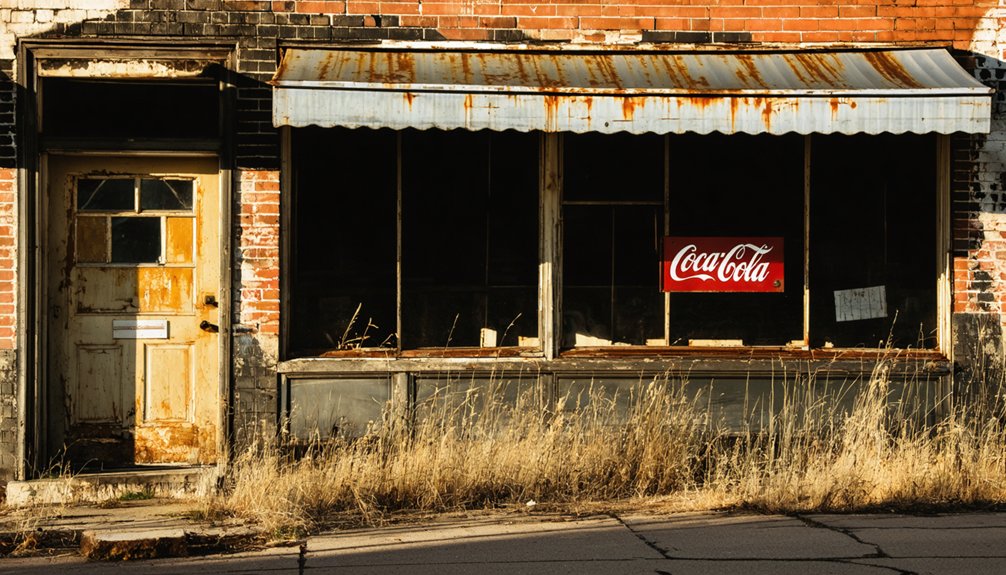You won’t find a traditional ghost town in Bourbonnais, Illinois, but you’ll discover something equally fascinating: a thriving French-Canadian settlement with abandoned historical treasures. While the community itself has flourished since the 1830s, the remnants of St. Viator College, which operated from 1868 to 1939, stand as silent witnesses to a bygone era. The area’s rich heritage, from Potawatomi trails to haunted landmarks, holds countless untold stories within its borders.
Key Takeaways
- Bourbonnais is not a ghost town but rather an active community that originated from French-Canadian settlement in the 1830s.
- The closure of St. Viator College in 1939 marked a significant institutional loss but did not result in town abandonment.
- The town maintains its historical heritage through preserved landmarks like the George R. Letourneau Home and Maternity BVM Church.
- Despite Potawatomi displacement in 1838, the area continued to develop as a thriving French-Canadian settlement.
- The town currently preserves its cultural legacy through active museums and restoration projects, indicating continued community vitality.
Origins of the French-Canadian Settlement
While the Illinois territory had long been a crossroads for Native American tribes and European traders, the origins of Bourbonnais as a permanent French-Canadian settlement can be traced to Francis Bourbonnais Sr.’s arrival in the 1830s.
As an American Fur Company trader, he established essential relationships with the local Potawatomi, including his marriage to Catish in 1814. Their settlement at Bourbonnais Grove marked the beginning of a significant cultural influence that would shape the region’s future.
You’ll find the settlement history deeply rooted in the fur trade network, with Bourbonnais Sr.’s connections to Chicago trader John Kinzie proving invaluable.
The village, officially platted in 1836, became a beacon for French-Canadian immigrants, spurring the development of a distinctive cultural enclave that would transform the Illinois frontier. Today, the area is recognized as part of the French Canadian Heritage Corridor, officially designated by the Illinois State Legislature in 2015.
Noel LeVasseur played a crucial role in establishing the fur trading outpost that would later become St. Viator College.
The Rise and Fall of St. Viator College
During the mid-nineteenth century, St. Viator College emerged as a symbol of college resilience in Bourbonnais.
What began as a modest village school in 1865 quickly transformed into a thriving four-year liberal arts institution under Father Thomas Roy‘s leadership.
The college’s educational legacy stretched from 1868 to 1939, shaping generations of young men through extensive programs in theology, science, and arts. Enrollment reached its peak with 250 to 300 students during the institution’s most prosperous years. Notable graduates included Archbishop Fulton Sheen, who went on to become an influential religious figure.
For seven decades, St. Viator College molded young minds through rigorous study of theology, science, and artistic disciplines.
- You’d find students engaging in military training while participating in the St. Patrick’s Literary and Debating Society.
- Despite devastating fires in 1906 and 1926, the college rebuilt swiftly, never missing a beat.
- The gymnasium became a regional basketball hub, hosting state tournaments from 1929-1931.
- Financial pressures of the Great Depression ultimately forced the college’s closure in 1939, though its impact on local culture and education persisted through other institutions.
Potawatomi Legacy and Displacement
Before the forced relocation of 1838, the Potawatomi people thrived along Illinois’ Calumet, Chicago, and Des Plaines rivers as respected “Keepers of the Fire.”
The 1829 Treaty of Prairie du Chien had initially secured two sections of land near Paw Paw Grove for Chief Shab-eh-nay and his band, yet this agreement proved temporary.
The U.S. government’s 1830 Indian Removal Act shattered the Potawatomi’s connection to their ancestral lands.
You’ll find echoes of their heritage in the 660-mile Trail of Death, where 859 tribal members were forced to march to Kansas, losing over 40 lives.
Father Benjamin Marie Petit, a Catholic missionary, accompanied the tribe throughout their grueling journey.
The tribe would control up to five million acres during their temporary stops in Missouri and Iowa before reaching Kansas.
Despite this displacement, the Potawatomi’s Native resilience endured.
After World War I, many descendants returned to Chicago, contributing to one of America’s largest urban Native American populations.
Haunted Places and Local Legends
Though Bourbonnais village limits don’t harbor widely documented ghost stories, the surrounding Kankakee County teems with haunted legends and supernatural tales.
You’ll discover the haunted Majestic Theater, where Julie Remmington’s spirit and a mysterious child ghost are said to roam. The notorious Manteno State Hospital‘s dark history of inhumane treatments and a deadly typhoid outbreak has left lasting paranormal activity. The area’s mystique deepened when Cavalier de LaSalle first encountered its mysterious landscapes in 1679. Francis Bourbonnais Sr. established a successful fur trading post in the area that would become known as Bourbonnais Grove.
- Haunted railroad tracks where phantom children’s laughter echoes and cars move unexplainably
- The historic Bourbonnais Cabin, rumored hideout of outlaws Frank and Jesse James
- EVP recordings and ghostly images captured throughout Kankakee County
- Phantom vehicles and spectral animals appearing on local roads and in cemeteries
These legends often interweave with Potawatomi history, creating a rich tapestry of supernatural lore that reflects the region’s complex past.
Historical Landmarks and Cultural Heritage
As you explore Bourbonnais’ rich cultural tapestry, you’ll discover a heritage deeply rooted in French-Canadian and Native American influences.
French-Canadian settlers from Quebec’s Upper St. Lawrence Valley first established this thriving community in the 1830s.
The George R. Letourneau Home, now a museum at 698 Stratford Drive East, stands as a symbol of the area’s vibrant history, offering monthly tours from March through December. For additional information about tours and historical inquiries, visitors can contact the society at 815.933.6452.
You can visit the Maternity BVM Church, which remains an active memorial to the French-Canadian settlers who made this land their home.
The community’s cultural preservation efforts continue through the French Heritage Museum at the Stone Barn, while the ongoing log schoolhouse reconstruction project at the Adrien M. Richard Heritage Preserve lets you step back to 1837.
Through walking tours and community engagement programs, you’ll experience firsthand how this settlement shaped Illinois’ multicultural identity.
Frequently Asked Questions
What Happened to the Descendants of François Jace Bourbonnais Père?
You’ll find Bourbonnais descendants scattered across America after the 1830s Potawatomi removal, with Jace family members migrating through Missouri, Iowa, Oklahoma, Texas, and California, maintaining their Native heritage.
How Did the Great Depression Affect Bourbonnais’ Population and Economy?
You’d be surprised – during the Great Depression, Bourbonnais actually grew by 12.6%, adding 86 residents. While farming faced economic impacts, the village maintained stability through small-scale agriculture and local commerce.
Were There Any Notable Conflicts Between French-Canadian Settlers and Other Immigrants?
While 90% of settler interactions were peaceful, you’ll find French-Canadians rarely had major conflicts. They actually thrived through cultural exchanges, strategic marriages with natives, and economic collaboration with other immigrant groups.
What Traditional Festivals or Celebrations Were Unique to Early Bourbonnais?
You’d have found lively Harvest Festivals celebrating French-Canadian farming traditions, Winter Carnivals with sleigh rides, and religious feasts at Maternity BVM Church marking the Catholic calendar’s most important dates.
How Did the Railroad Development Impact the Growth of Bourbonnais?
When your ancestors shipped grain by rail in the 1850s, you’d have seen how railroad expansion shaped Bourbonnais – it brought slower but steady economic growth compared to neighboring Kankakee’s rapid development.
References
- https://www.villageofbourbonnais.com/visitors/history/
- https://www.potawatomi.org/blog/2021/08/19/bourbonnais-family-history/
- https://kids.kiddle.co/Bourbonais
- https://www.visitkankakeecounty.com/550881/455/four-walking-tours-of-historic-bourbonnais-illinois
- https://www.hauntedplaces.org/bourbonnais-il/
- https://en.wikipedia.org/wiki/Bourbonnais
- https://kankakeecountymuseum.wordpress.com/tag/ghost-stories/
- https://historyillinois.org/bourbonnais-grove/
- https://bourbonnaishistory.org/french-canadian-corridor
- https://www.visitkankakeecounty.com/blog/weekend-tour-of-french-canadian-heritage-corridor



